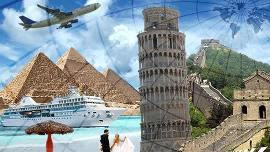Art and Craft define the world. Scriptures, paintings, encryptions, sketches etc, are all different forms of art. They epitomize creativity and imagination. They tell us about the wonderful times when art was thought of in a very different way and held in a different regard altogether. Art and craft together have undoubtedly been the imperial grace of artistry. They can take any shape and be of any form. They can be depicted through color, through canvas, through collage, through caricatures, through cartoons, through compositions etc. All of them come with a different undertone and they all have a very unique and different significance. Then comes the finishing work, whatever the composition has been, it has to be polished and finished so that it looks presentable and enviable.
Art and Craft have been the finest of ways to show the grace that emanates from natural thoughts and perceptions. The way imaginative concepts are loaded onto something and made into a graphical presentation astonishes the human eye and appeals to it very highly. The best part of it is that such form of art and craft can be found and seen all across the world. Caves, pyramids, tombs, visual descriptions etc. are some of the sites where these can be found and can be said of as very appealing.
Art and Craft describe effort and imagination. They are a showcase of brilliance mixed with skill. They depict the mightiness of those personnel who had the drive to put their thoughts into picture. They represent artistry in a very delectable and revering form. All in all, art and craft are the result of some scintillating imaginative thoughts being brought to life by master craftsmen. This surely entices the eye and takes the imagination a long way ahead.
Art and Craft have been the finest of ways to show the grace that emanates from natural thoughts and perceptions. The way imaginative concepts are loaded onto something and made into a graphical presentation astonishes the human eye and appeals to it very highly. The best part of it is that such form of art and craft can be found and seen all across the world. Caves, pyramids, tombs, visual descriptions etc. are some of the sites where these can be found and can be said of as very appealing.
Art and Craft describe effort and imagination. They are a showcase of brilliance mixed with skill. They depict the mightiness of those personnel who had the drive to put their thoughts into picture. They represent artistry in a very delectable and revering form. All in all, art and craft are the result of some scintillating imaginative thoughts being brought to life by master craftsmen. This surely entices the eye and takes the imagination a long way ahead.





